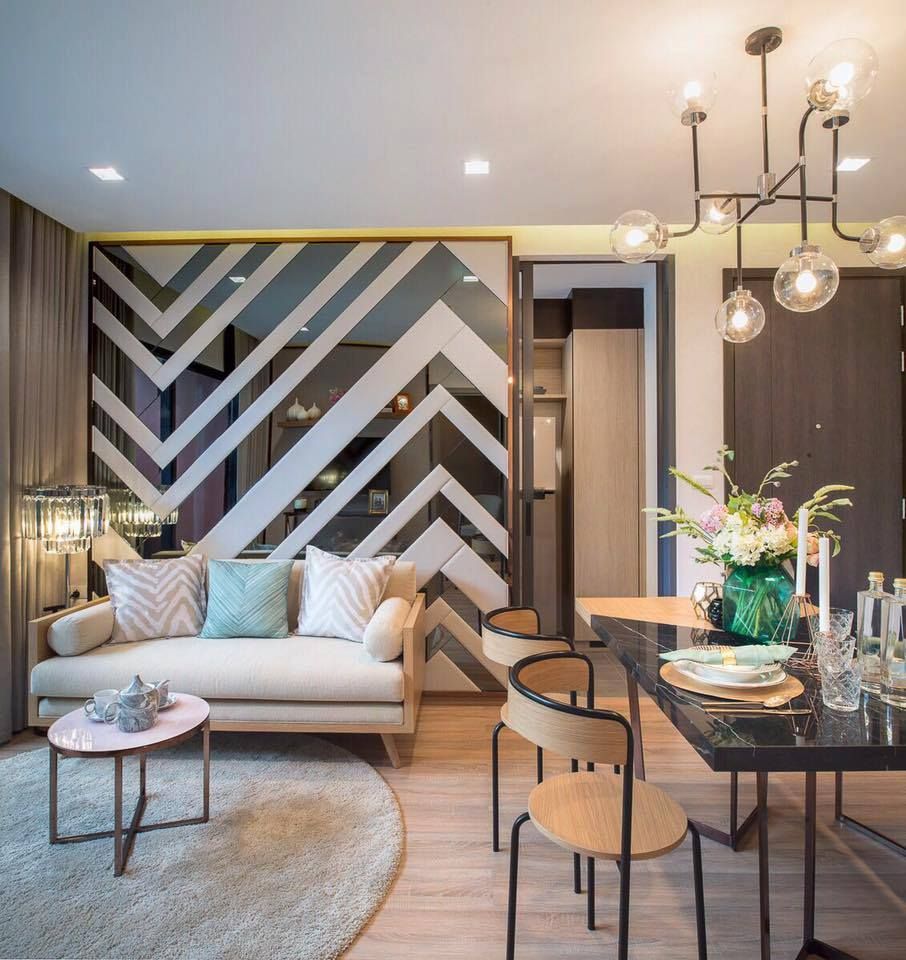PRESENTED BY

You’ve probably noticed how stylish Bangkok has become lately; from retro Cuban-themed bars and Prohibition-era speakeasies to chic, high-rise condos and retail stores that rival art galleries.
Recently, Coconuts talked to two of the people behind such inspired spaces. They just happened to be female, young (according to industry standards) and full of tips on how to create your own stylish space.
Peechaya Mekasuvanroj and Supatra Hope Ingalls launched their interior design company, Wonderscape, in 2013. Now, after creating the interiors of The Base Rama 9, their largest project to date, they shed some light on their process.
Have you always been interested in design?
Supatra Hope Ingalls: When I was at Silapakorn University, the paintings and photographs by the graduate students inspired me. That’s when I knew I wanted to be in design.
Peechaya Mekasuvanroj: I didn’t always know that I wanted to be in interior design, but I always loved to travel. When I was 18 I went to New York to study architecture at Pratt Institute. When I came back to Bangkok I started to get jobs in interior design. I really liked it so I stuck with it.

Show Unit of The Base Rama 9
How did you end up starting a company together?
PM: Hope and I used to work together in another firm. Then we ended up changing jobs at the same time, to the same company! After working together for a while longer we decided it was time to start our own company.
SHI: We work really well together and we have a lot in common. We started small with a lot of passion, and the team has really grown.
You recently designed the interiors of The Base Rama 9. How did you make that project unique?
SHI: The trees at The Base Rama 9 immediately stood out to us. There are so many! We wanted to emphasize the trees with a subtle resort feel and blend that concept with the urban style of the condo.
PM: There were earlier versions of “The Base” in Chaengwattana, Pattaya, and On Nut, among other places. At first we asked Sansiri [the developers] if we should do something similar to the existing projects. But they said, “No, just go there, get inspired and do it your way”. So we did.
The landscape designer highlighted The Base Rama 9’s garden style so we decided to bring that to the interior too. In the lobby we took the concept of an outdoor sala and brought it inside.
That made us imagine a house in the forest, which led to the idea of a Japanese house on a mountain. We began looking into wooden details to achieve that style. The wood became the “language” of the public spaces – simple, elegant and Zen. It was a nice contrast to the natural patterns of the marble.

Lobby of The Base Rama 9
You’ve designed stores for big names like Sansiri, BOYY and UnCENSORED. Have you felt any challenges because you are women in the design industry?
SHI: Not necessarily, but being younger can present some challenges. Sometimes we are the youngest in the meeting room, which makes us work even harder to prove ourselves.
PM: Actually being women can be advantageous. Certain people, like the construction team, are especially nice to us!
But it does toughen us a lot. We deal with many parties but everyone has to listen to us at the end of the day. As designers, we make the final decision and we have to be precise and firm so everyone, from the construction manager to the clients, respects us.
Do you have any tips for women starting out in design?
PM: A good mentor helps a lot. When you work alone sometimes you don’t know if your ideas are good. Working together brings out new perspectives and leads to totally new ideas.

BOYY retail store in Central Embassy
Where do you look for inspiration?
PM: I find inspiration from travelling and from everyday life – on the streets and in the malls like Siam Discovery or Central Embassy. Even when I’m shopping and eating I always notice the materials and interiors around me.
SHI: We have to be open to learning new things every day, whether it’s about new materials, design concepts or new suppliers in the market.
How would your describe your style?
SHI: We don’t stick to one particular style, and we always create something unique for each project. We pull out a unique element of each project and highlight it.
PM: We start minimal and then find a featured element to emphasize. That element leads to other things. It becomes a “language” that we use and repeat throughout the project, just like the wood in The Base 9..
Do you have any rules that you follow in interior design?
SHI: We don’t have rules, but we often design in a clean and minimal way. Also, we ask people who are not in the design industry for their opinions.
PM: Yeah, it’s not a rule per say, but we always design with someone who’s not in the design industry in mind. We design in a way that is understandable and accessible to everyone – simple but impactful.

UnCENSORED retail store in EmQuartier
Do you have style tips for those of us who live in small spaces, aka 99% of Bangkokians?
SHI: Start with what you love and go from there. For small spaces, focus on the function of each element. It helps to draw the layout of the room first. Use light color tones and minimal decoration, keeping one feature as a focal piece for the room.
PM: Yeah, once you identify what style you like, use that as a guideline when you shop. Look at color swatches and see what you like and how it fits with your home. Focus on furniture with multiple functions that can transform your space – like a working desk that doubles as a dining table.
Do you have a dream project in mind?
PM: I would love to design a museum or library. A space where people could be immersed in creativity, get inspired and learn. Being part of that process would be great.
SHI: I still want to see something super crazy, creative in terms of hotels. We do have some great ones here in Bangkok, but there’s room for more!
You’ve already designed residential condos and commercial interiors. What’s next for Wonderscape?
PM: We are designing the interior for an exciting new restaurant in Yangon. Design is really developing fast in Myanmar. People in Yangon are looking for more and more cool places to go and hang, and the expat community is also growing. It has a lot of potential.






Reader Interactions